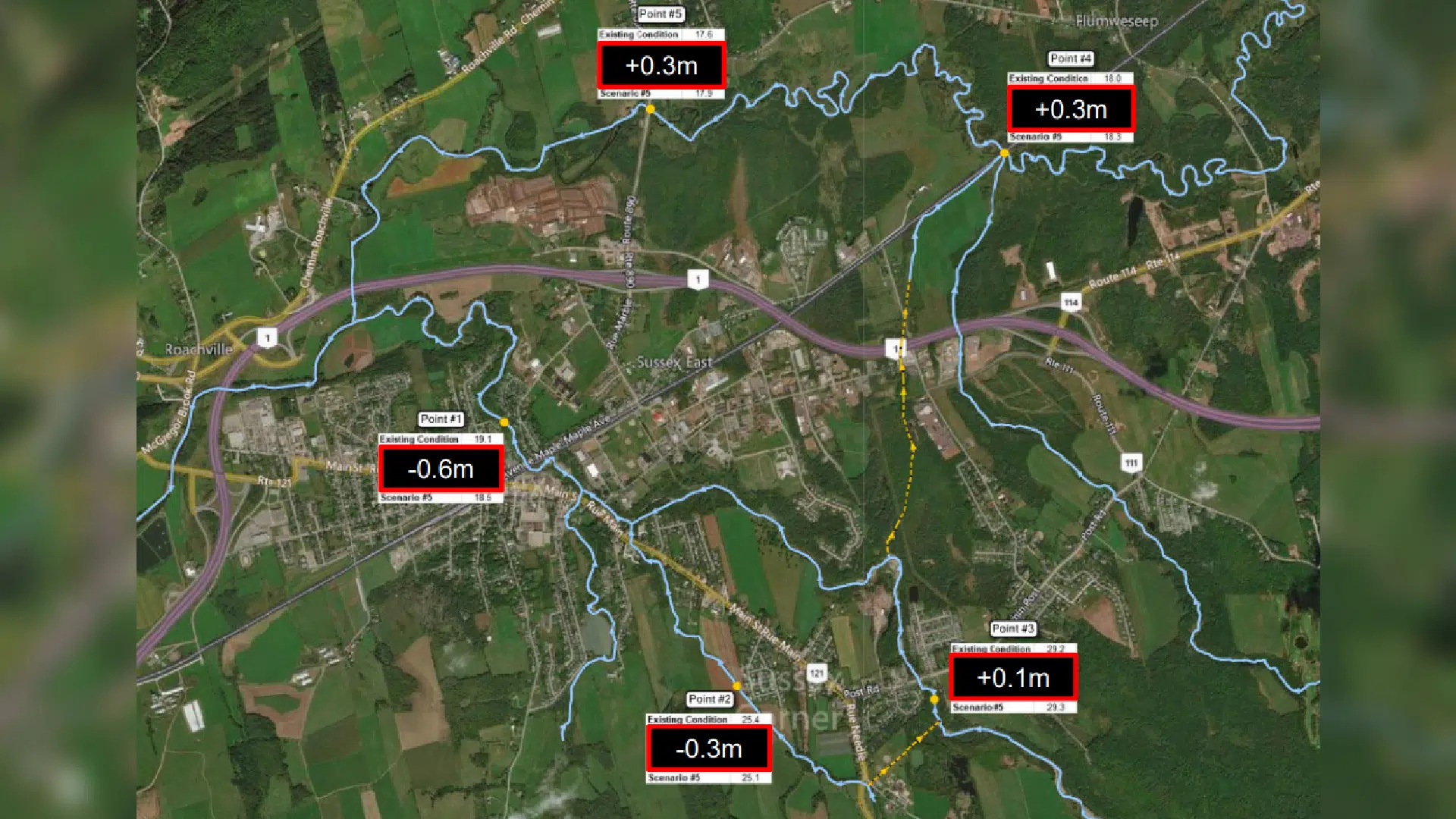A plan to help deal with flooding issues in Sussex and Sussex Corner is described as “bold and expensive” by one mayor.
Residents from the two communities got a closer look at the $28-million plan during a community meeting Wednesday night.
“Increasingly over the last decade, our region is experiencing more and more flooding, and the flooding has been devastating to our community,” Sussex Mayor Marc Thorne said in an interview Thursday.
“We have to do something that addresses this climate change and something that we feel is bold.”
The plan was first presented to residents in 2020 and outlined six potential projects as “high priorities” to mitigate flooding in the Sussex area.
Thorne said while the concept remains the same, the plan has been “fleshed out” to provide more details.
The most critical — and expensive — components of the plan, he said, are two diversion channels that would divert flood waters around the communities.
One would divert flood flows from Parsons Brook to Trout Creek, the other from Trout Creek to the Kennebecasis River.
“These channels would only become active when water levels reach a certain point. By doing that, we could make sure that the creek channel doesn’t get overwhelmed,” said Thorne.
Other projects outlined in the report included a flood berm along the Kennebecasis River behind Gateway Mall — which has already been completed — and one near Main Street downtown from Maple Avenue to the junction of Ward Creek and Trout Creek.
According to the presentation from Wednesday’s meeting, the current proposal could reduce flood damages from a single event by as much as 75 per cent, and the return on investment is “likely” above six.
It also noted that the Trout Creek diversion negates the need for the downtown berm.
Thorne said more than 100 people attended the community meeting and he believes it was well received.
“I think some people were probably disappointed that there’s not a quick fix for flooding in our community,” he said.
“I think they took some comfort in the fact that both councils are working continuously on trying to resolve the flooding issue, not just for now but always.”
Thorne said the next step will be to secure funding from other levels of government.
He said “lots of hurdles” need to be crossed that are out of their control, such as getting the required regulatory approvals for the work.
Throne said their most optimistic scenario is to have the work done within three to four years, but he said it could take as long as six to eight years.
You can watch the full presentation from Wednesday’s meeting below.




